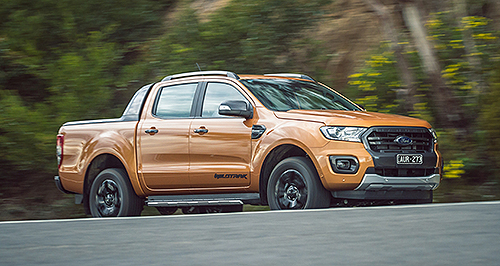News - General News - GovernmentNew Zealand aims to ‘clean up’ car industryFeebatable: Under the proposed feebate scheme, Nissan’s new Leaf would attract a big taxpayer-funded discount of several thousand dollars while Ford’s Ranger – the top-selling vehicle in NZ – could be hit with a hefty extra fee. NZ industry welcomes proposed incentive scheme for green cars but not CO2 standard12 Jul 2019 By TERRY MARTIN THE New Zealand government has this week announced two major new-vehicle emissions-reduction proposals that include a ‘Clean Car Discount’ which provides buyers of green cars with a rebate of up to $NZ8000 ($A7642) and slaps a fee of up to $NZ3000 ($A2866) on those who purchase a higher-polluting vehicle.
While the NZ Motor Industry Association (MIA) has welcomed the ‘feebate’ scheme, the peak industry body has raised concerns over the second core tenet of the government’s latest plan, the so-called ‘Clean Car Standard’, which sets an average CO2 emissions target of 105 grams per kilometre for each auto brand’s light-vehicle fleet by 2025 – and would get tougher beyond that.
Phased in over five years, the standard is designed to force vehicle distributors to progressively import more fuel-efficient and electric vehicles as the Ardern government works towards its commitment to reach net-zero carbon emissions by 2050.
NZ MIA chief executive David Crawford said the proposed standard implies that new-vehicle distributors “have significant influence on vehicles consumers choose to buy as well as vehicles manufacturers produce”.
“This is not the case as New Zealand is a tiny global market, and therefore this policy is unlikely to achieve the results that the government is seeking,” he said.
“Policies aimed at controlling supply into our market are generally not favoured as they impose artificial controls that often distort that market.
“They can also create a range of unintended outcomes such as people holding onto older, less safe and more polluting cars longer than they would otherwise and it is also likely to lead to price increases for all new vehicles entering the market.”
Mr Crawford said the government appeared to misunderstand the fact that “new-vehicle distributors simply supply what people buy”.
“Our view is that the best policies to achieve a reduction in emissions are those that influence purchase decisions,” he said. “Changes in models supplied to New Zealand will follow if the demand is altered.”
The MIA has therefore welcomed the proposed discount scheme, due to kick off in 2021, which Mr Crawford said sends “a very clear signal to consumers” and should, over time, increase demand for lower-emitting vehicles.
“In our view, it is the most powerful policy available to this government to influence car purchase decisions,” he said, adding that other measures in conjunction would produce a bigger impact, such as a sliding-scale fringe-benefit tax regime and improved depreciation rates.
Only those vehicles with a retail price of less than $NZ80,000 ($A76,387) would be eligible for a discount, while all vehicles classified as high emitters would incur a fee, regardless of price.
The maximum $NZ8000 subsidy would apply to electric vehicles, which have zero tailpipe emissions, while the highest penalty of $NZ3000 would hit new vehicles with combined average CO2 emissions of more than 250g/km.
The scheme is designed to replace the current exemption from road-user charges that applies to EVs.
It would also apply to near-new grey imports (less than three years old), which form a significant proportion of New Zealand’s annual motor-vehicle sales, with the highest available discount set at $NZ2600 ($A2483) for EVs and the biggest penalty $NZ1500 ($A1432).
New Zealand’s associate transport minister Julie Anne Genter said: “Most Kiwis want to buy a car that’s good for the environment but tell us the upfront cost and limited choice makes it a challenge.
“This is about making cleaner cars a realistic choice for more New Zealanders – by reducing the upfront cost of electric, hybrid and fuel-efficient vehicles when sold in New Zealand for the first time.
“Discounts will be financed in the fairest way possible – by putting a small fee on the highest-polluting vehicles when they’re sold in New Zealand for the first time.
“This means people will still have choice while contributing to the task of cleaning up the vehicles coming into New Zealand.”
Ms Genter said the New Zealand government expects the combined effect of both policies “to save the country more than $3.4 billion in fuel and result in fuel savings of more than $6800 over the lifetime of an average vehicle”.
She added: “These changes would prevent more than five million tonnes of dangerous climate pollution going into our atmosphere and would make a major contribution to meeting New Zealand’s climate targets.
“The benefits of these policies would flow on into the secondhand market as more fuel-efficient hybrid and electric vehicles are sold on.”  Read more |
Click to shareGeneral News articlesResearch General News Motor industry news |
















Facebook Twitter Instagram